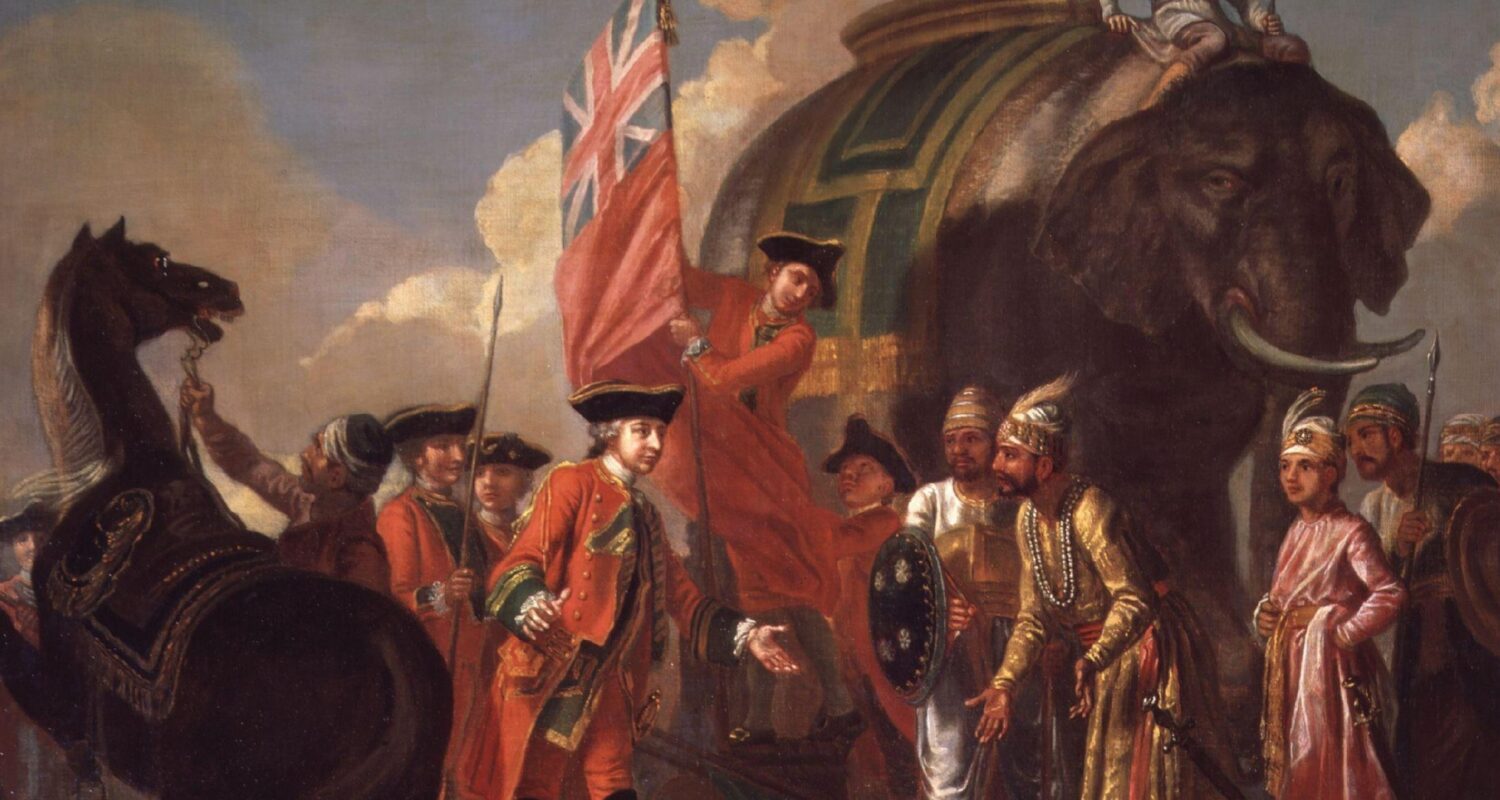This review first appeared in Tribune. “as the environmental historian Chris Otter shows in his remarkable new book, Diet for a Large Planet, there is another version of this story. Instead of looking at factories, cities, and coal, Otter’s book is a history of farming, food, and animals. In the century before the First World War, Britain remade the planet in order to feed its own people, and in doing so transformed the environment forever. Today, many intuitively understand that the way that food is grown and distributed comes with a devastating environmental cost. Few, however, are aware of just how central a role Britain played in this story.”
The British Empire created the first global capitalist market for food, thereby transforming huge swathes of the world – and leaving behind a legacy of environmental destruction that haunts a rapidly warming planet.

In the words of the environmental historian and activist Andreas Malm, ‘the thermometer can be legitimately suspected as a barometer of the rolling invasion of the past into the present.’ For this reason, asking when we would begin a history of the climate crisis is a difficult question, with many plausible answers. Asking where we would begin such a history, however, is a little easier. The history of the climate crisis is inextricable from the history of Britain.
There is a familiar version of this story, and it goes like this. Beginning in the late eighteenth century, a world of water mills, wood-burning, and horse-riding gave way to a world of railways, steam boats, and blast furnaces. Britain was not the world’s first wealthy, technologically innovative, and globe-spanning empire, but it was the first to undergo a sustained transition from organic to fossil carbon sources of energy. By 1830, Britain had already emitted two billion tons of carbon, more than the present-day totals of Bolivia, Uruguay, the Democratic Republic of Congo, Ethiopia, Cambodia, Iceland, Haiti, Nicaragua, and Chad, combined.
The transition from organic to fossil sources of energy was intimately connected with the emergence of liberal capitalism. British industrialists turned from water power to steam power because coal opened up new possibilities for controlling and disciplining labour. As a mobile and dormant stock of energy, it allowed industrialists to move factories into the heart of population centres, where labour was cheap and disposable. Unlike water mills, steam power was not weather-dependent and could be turned on and off at will, creating a standardised working day. Britain’s emerging fossil economy, therefore, entailed a new set of social as well as technological and chemical relationships.
The emergence of urban industrial capitalism is one way in which the history of Britain and the history of climate change are linked, but, as the environmental historian Chris Otter shows in his remarkable new book, Diet for a Large Planet, there is another version of this story. Instead of looking at factories, cities, and coal, Otter’s book is a history of farming, food, and animals. In the century before the First World War, Britain remade the planet in order to feed its own people, and in doing so transformed the environment forever. Today, many intuitively understand that the way that food is grown and distributed comes with a devastating environmental cost. Few, however, are aware of just how central a role Britain played in this story.
Large Planet Thinking
At the turn of the nineteenth century, as Britain’s growing population was beginning to exceed its capacity to produce food, two different philosophies of food production emerged. Otter calls these ‘small planet’ and ‘large planet’ thinking. Small planet thinkers, the likes of Thomas Malthus and Joseph Banks, opted for a cautious protectionism to solve the food crisis, arguing for continued self-sufficiency via the cultivation of new wetlands, forced emigration and experiments with new types of crop. Large planet thinkers, among them Thomas Macaulay and J. S. Mill, argued that Britain should scour the earth for cheap food tearing down tariff barriers and drawing on its empire to overcome short term natural constraints on population, urbanisation and economic growth.
By the middle of the nineteenth century large planet thinking was in ascendancy, with profound consequences for the history of Britain and the wider world. As steam shipping and railways compressed space and time, vast stretches of the world were turned into monocultures for feeding Britain’s growing population.
Meat, particularly beef, plays a central role in Otter’s story. Between 1830 and 1912 meat consumption per head almost doubled in Britain. This was made possible by the transformation of huge swathes of the planet into grazing land for cattle. Following the lifting of the embargo on live animal importation in 1842, Britain became, in the words of Otter, ‘the stud farm of the world’, as selectively bred cattle breeds from Hereford and Aberdeen came to dominate the landscape of New Mexico and the River Plate.
As late as 1930, Otter calculates that more than 90 percent of Argentina’s beef exports were going to Britain. As meat became more abundant it also became abstracted from nature, mediated by technology and distance, with cattle governed as vast overseas populations and beef arriving as standardised slabs on refrigerated ships.
A similar process happened with wheat. The abolition of the Corn Laws in 1846 marked the symbolic beginning of a century of liberal free trade imperialism, but it also transformed the ecology of distant continents. In the ensuing decades, vast zones of the world were transformed into breadbaskets for Britain’s expanding population. Fields of wheat destined for the exploding populations of London, Manchester and Glasgow carpeted the Russian steppes, the Punjab, Australia, and Kansas. By the late 1880s, 70 percent of US wheat exports went to Britain. By the early twentieth century Britain imported more than two-fifths of all wheat entering world trade.
Sugar, initially grown by enslaved people in the Caribbean, was one of the earliest and one of the most consequential ‘large planet’ foods. Consumption of sugar tripled in Britain between 1750 and 1900. Providing a cheap and efficient source of energy for an increasingly urban working class, sugar was a crucial historical link connecting extreme forms of racialised violence in the empire with the industrial revolution at home.
The mass importation of sugar and the industrialisation of food production more broadly remade British diets and bodies. By the early twentieth century tooth decay was endemic among working-class children, with one 1925 study finding that 13 percent of all children’s teeth were rotten beyond repair. Soft food was thought by contemporaries to be changing the shape of British people’s heads, as sagging jaws produced ‘pinched-in, hatchet-shaped’ faces.
The ‘ghost acres’ laid out to produce food on almost every continent allowed first Britons, and later many other nations in the Global North to, in the words of Otter, indulge in ‘the thermodynamically implausible’ idea that ‘growth could continue without biogeochemical consequences.’ This food system enabled an explosion in Britain’s population. In 1798, when Thomas Malthus argued that Britain’s population had reached the limit of what could be sustained by the country’s food and energy supplies, there were 8 million people living in Britain. A hundred years later there would be more than 30 million.
Meanwhile, domestic food production entered a period of freefall. By 1951, the economist Erich Zimmermann noted that Britain had come closer than anywhere else on earth to presiding over the extinction of its own agriculture. This long history explains why Britain has fewer regional food varieties than its European neighbours. In 2005, Italy had 149 foods with protected geographical indication status, France 143, and Britain had only 29. By the beginning of the twentieth century, Britons ate beef from Argentina, butter from New Zealand, sugar from the West Indies, and bread from Ohio, but they did so with forks made in Sheffield, on plates made in Stoke-on-Trent, and in houses heated by burning coal from Northumberland.
According to Otter, if we want to understand the origins of our present system for growing and distributing food, we need to look at Britain rather than America, and to the nineteenth rather than the twentieth century. The extraordinary interconnected global system for growing, standardising, moving, and storing food developed by Britain differ only in degree rather than in kind from the food networks that structure our lives today.
Power and Diet
The problem with large planet thinking, of course, is that the planet is never large enough. In 1928 Mahatma Gandhi famously warned that if a nation of 300 million people tried to feed itself in a similar manner to Britain, ‘it would strip the world bare like locusts.’ Inherent in large planet thinking is the idea, sometimes explicit, sometimes implicit, that not all lives are equal.
For Britons during the long period of food expansionism it became a normal to believe that a healthy and varied diet was the sole birthright of a global elite. In 1843, on the eve of the Irish famine, Richard Cobden told the House of Commons that to eat potatoes rather than bread was to ‘abandon the hope of moral improvement.’ This way of thinking allowed liberal politicians to regard the famine with a cold exterminationist gaze. Many, such as the economist John Ramsey McCulloch, fantasised that Ireland could be transformed into a sparsely populated zone of cattle grazing, although he chillingly noted that its population was ‘still in excess’ of what was necessary for this outcome. Meanwhile, Winston Churchill, whose government’s policies massively exacerbated an avoidable famine in Bengal in 1943, complained that ‘yellow men, brown men, and black men’ had not yet ‘learned to demand and purchase a diet superior to rice’.
The linking of high-status food to high status individuals took gendered as well as racialised forms by the early twentieth century. Otter shows that the common notion that women needed less protein and therefore less meat than men was justified by a repeated misunderstanding of the backbreaking intensiveness of unpaid domestic labour.
Our global food system emerged in the British imperial world of the nineteenth century and continues to reproduce its inequalities with terrible consequences for the environment. Modern food production is, of course, not the only driver of the climate crisis, but its damage is undeniable. Food bears the responsibility for almost a quarter of the greenhouse gases that humans generate each year. Meat and dairy alone are responsible for 14.5 percent, which is approximately the same as the combined emissions from all of the world’s cars, trucks, planes, and ships. Cattle, the animal that was at the vanguard of Britain’s world spanning industrial food complex, has by far the highest carbon footprint of any animal.
Otter’s book is another example of the ways that Britons need to think critically about the how their nation’s recent history has forged our present world. To fully understand Britain’s historical contribution to the climate crisis we need to look at the slaughterhouse as well as the steam engine, the grain silo as well as the railway.
To tell this story, we need to look both at the formation of Britain’s working class and the global hierarchies of race established by the domination of distant regions of the world. The smoke that rose into the sky above Manchester during Engels’ stay in the 1840s tells one story about Britain’s environmental history, while the latent steppes and plains of Argentina, North America, Australia, and the Punjab, soon to be absorbed into the nation’s hungry orbit, tell another.


